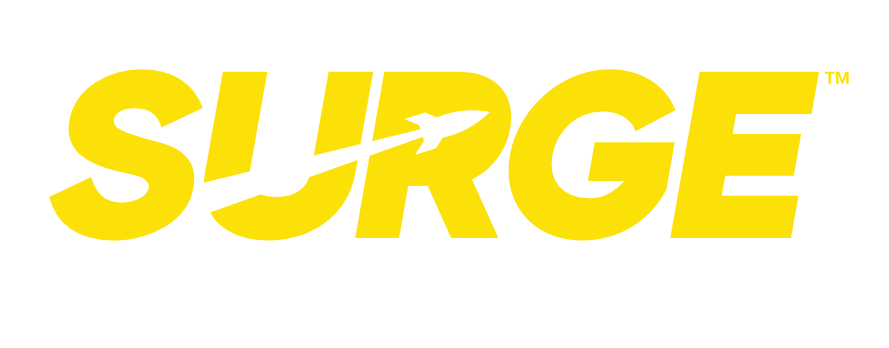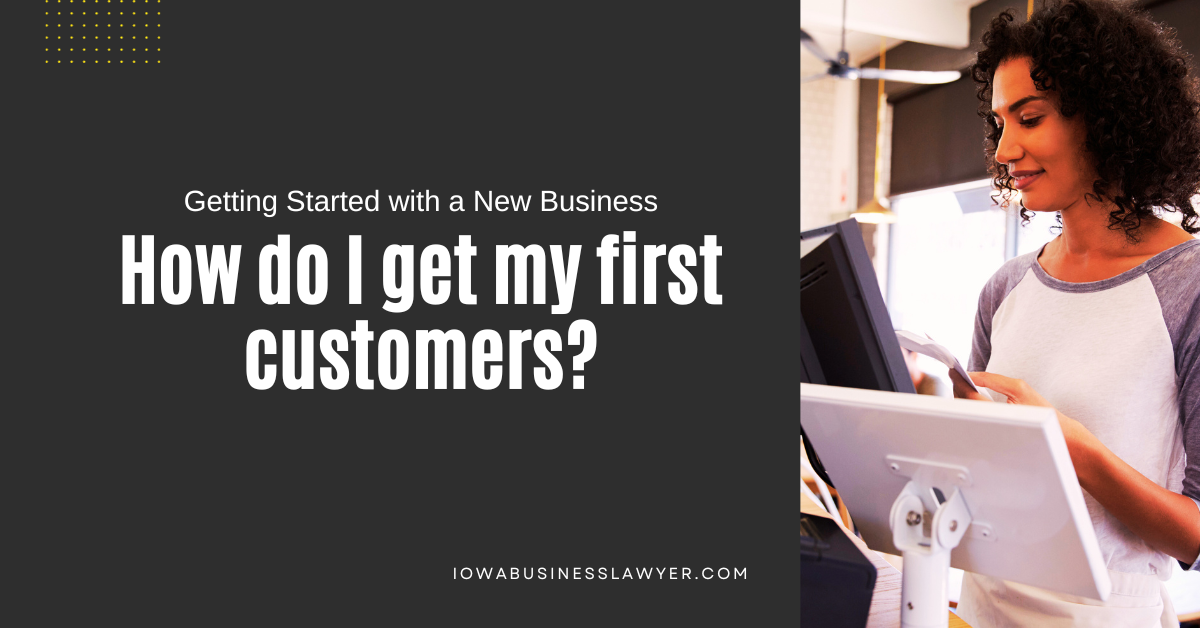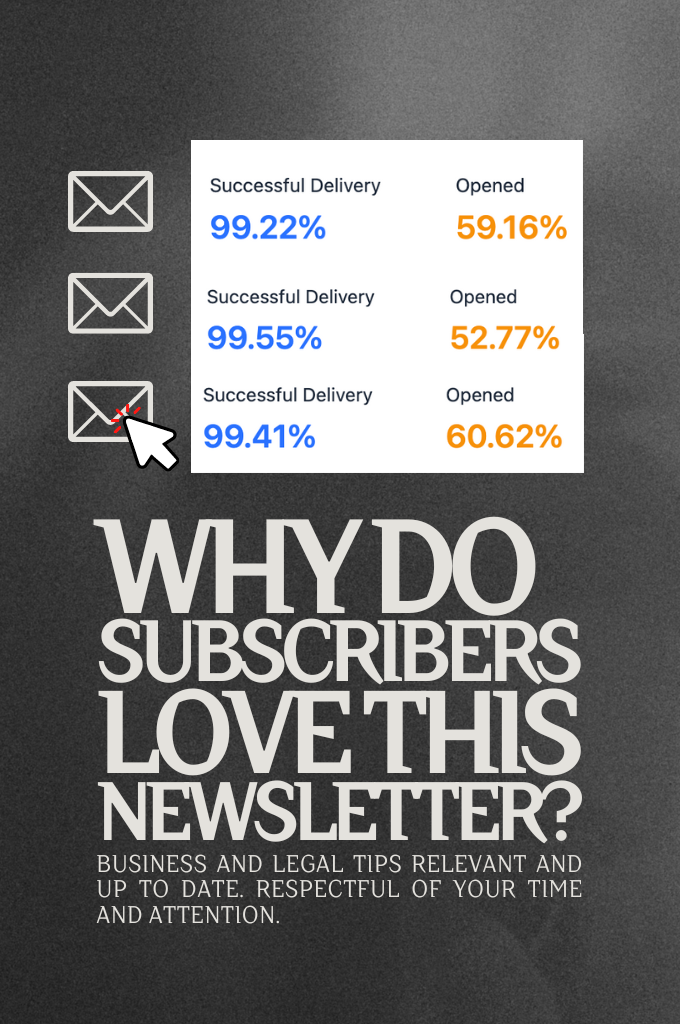How do I get my first customers?
It’s a common struggle for new business owners who have launched a business. They need customers but their social media channels don’t have many followers, their google listing has no reviews, and there’s nobody to give a referral. If you’re a savvy business owner, you probably also want to start with the most affordable and free options.
So how do you get your first customer? Start with the basics and make sure your Google and social profiles are set up properly. Upload a few images that represents what your business does and ideally have a logo. A simple logo is fine and you can use the free version of Canva to create a version 1.0 logo and social graphics. Then you’ll want to do some marketing—either on social media or cold calling.
If your business needs a website, decide if a simple one-page website can work. For many businesses, it can. Having a website professionally designed costs from $750 to $10,000 typically. But I usually suggest starting with the simplest possible thing that can work. You can use one page to show your contact info, describe your product or service, present your value proposition, and get people to contact you. Google, Wix, and Mailchimp all offer free basic websites. While you’re at it, consider the free version of Calend.ly for appointment scheduling and the free version of Mailchimp for sending emails to a list of potential customers.
You can probably do all of the above steps in one day. However, none of these will bring in a single customer. They just create a place for customers to go when you persuade them to give you a chance.
The next and most important step: Decide where your customers are and then meet them there. Social media is a great opportunity, though which social network you use can vary. For B2B you may want LinkedIn, for consumers, Instagram and Facebook may be better. Find communities and hashtags relevant to your audience and start being social.
Here are a few things to try:
- Offer a special price to the first 3 customers willing to be case studies
- Ask for 5 people to join a focus group to help you understand the needs of the market
- Share a poll to a group on LinkedIn or FB asking for people’s opinions on the problem your business solves
And, if social isn’t the right tool for you:
- Search Google and LinkedIn for businesses you may want to sell to
- Stop in for a visit or give a call
- Hand write a short letter and drop it in the mail
Here are examples of what the above strategies look like.
Special pricing for 3 customers who want to be case studies
Here’s an example: Leet’s say you provide beauty services, such as nails or hair. Find 3 customers who want a discount. You can even let them “name their own price.” Hopefully you get more than 3 people who want in. If so, choose the 3 who have the most friends and followers on social media or the ones most likely to appeal to your target audience. Spend a little extra time with them listening to their needs, talking to them about your products, and making sure that what you’re offering is going to work for them.
Before you begin, let them know that you’d love a five star review and ask if they can share pictures on social with you tagged. Ask them not to share the price, since you’re giving them a special deal.
If appropriate, get before and after photos. Make sure you know how to tag the person on the proper social platforms. As soon as they’re done, ask them their opinion and, if they’re happy, ask for a Google, Yelp, or Facebook review be posted before they leave. A great review will describe the service they received. i.e. “Just had my hair lightened by Katie and I love the extra time and effort she put into it. I’m going to look amazing for my anniversary dinner tomorrow, thanks Katie.”
Share the pics you took to social media, but first make sure your business name or social handle is on it. Tag your customer in the post so that it gets seen by their friends and followers.
This works for remodeling and service businesses too. Just be careful with how much of a discount you give.
In all cases, be careful of “cheapskates” who are never happy. Some people want everything for free or dirt cheap and will complain once it’s done, want constant rework, and are never satisfied. You’ll need to screen potential customers first. Ask them about other similar products or services they’ve used. If they only complain or brag about getting stuff for free, thank them and tell them you’ll get back to them. It’s better to have zero customers than to have this type.
Focus Groups
A focus group is a meeting, sometimes one on one, sometimes as part of a small group. I strongly suggest doing these as one on one events.
Invite people who are target customers to set up a meeting with you, either in person or virtual. The goal is to get 3-5 appointments. Once you meet with them, ask them open-ended questions about their experiences related to the problems your business solved. Open ended questions cannot be answered with yes/no questions. If you want to ask “rate on a scale of 1 to 5” types of questions, make sure to follow up with additional questions.
For example: Let’s say you’re a consultant helping business leaders hire good employees. You could do this: Find a few companies in your target segment and let them know you’re starting a consulting service. Tell them you need to do some market research to better understand if there’s a demand for the kind of help you’re offering. Let them know it’s not a sales call, but you just need to know more about the pain points in the industry.
Here are some questions you can ask: What are some of the problems you’ve had hiring employees? Can you tell me about some successful hires that you wish you could do again? What kinds of candidates are a bad fit for your business? These are all open-ended questions. Here’s an example of a scale-based question followed by an open-ended question: What percentage of your applicants are well qualified? What are some of the techniques you’ve tested to help get more qualified applicants?
Once you’ve asked a few questions, ask if you can tell them about your service. Let them know your goal is to understand if the messaging you’re using is going to resonate with business owners. Do not ask them if they like the message, ask them if they think other business owners would like the message. Then ask if there’s something particularly strong about the message or if there is something missing that should be included.
Then, and this is important, ask them if they know any business owners who may benefit from your service. Usually, if you do five of these types of meetings, you can get one potential customer. And, almost as good, you get a lot of useful information to help with your future marketing.
Cold calling or mailing
Some people dread talking to strangers. Don’t panic! Think of every meeting as an experiment and an opportunity to learn. Also, remember, that it may take 99 failures before you get 1 success—that’s ok. It’s just a matter of time before you get that success, especially if you are constantly improving your message.
Decide if phone call, email, social message, postal mail, or in-person is best. Email and social are the cheapest but are also the easiest to ignore. A handwritten letter can be surprisingly effective, but just select your recipients carefully. For these options, personalize the message and keep it short. Your goal is to get them to meet with you. “Hey Sue, I’m starting my business helping people save money and time with their yard work. Do you have a minute to talk? I’d love to learn what people are looking for in a yard maintenance company. What’s the best way to reach you?”
I strongly suggest searching the internet for resources on cold calling in your industry. You can look at the ads and slogans others use to give a head start.
Always use your network of friends and family to get suggestions for “warm” rather than cold leads. People who are more likely to talk to you without slamming the door in your face. They may not hire you, but at least you can test your sales pitch a few times.
Warning: There are laws and cell phone carrier rules that govern spam emails, phone calls, and text messages. Be careful before using these methods.
When to hire a marketing company
I’m a big fan of hiring professionals. Marketing companies can help speed up the process. However, I’ve found few companies target brand new businesses that are on a tight budget. They’ll help you set up a website, Google listing and social accounts. But beyond that, the pricing can get very expensive.
Also, marketing companies will not handle sales. They deliver leads. When they are doing well, they give you highly qualified leads–meaning the people fit your description of an ideal customer and are ready to spend money. However, as mentioned above, unless they’re doing paid ads, the process typically takes months before you see results.
That said, if you need results fast, it’s best to hire a marketing firm to run your paid ads. You can DIY it, but if you’re in a hurry, the trial and error of creating great ads eats up precious time. Find an agency that has helped businesses like yours and has already fine-tuned a message that converts


